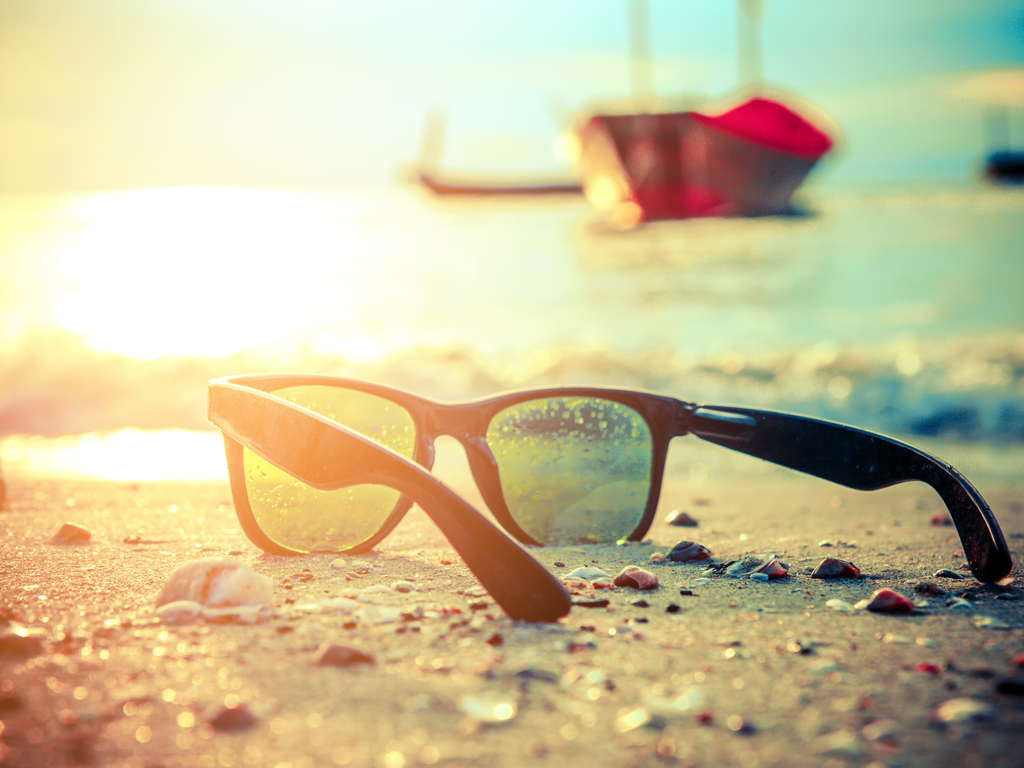Not All Sunglasses Are Created Equal: How To Choose The Best Protection
The sun is shining and summer is here, which means protecting your eyes. But choosing the best sunglasses takes a little more thought than grabbing the first pair in front of you.

The sun is beating down, you have your sunscreen on–now it’s time to put on your sunglasses. But as you reach for your handy eye protection, take a beat, because not all sunglasses are created equal. The tint and the construction change how they protect your eyes and how you see through them. So, depending on what activity you’re planning for the day, you might want to change up the sunglasses you choose.
Protect Your Eyes From the Sun
UV light can cause many conditions that impact our vision, such as cataracts, cancer and something called “surfer’s eye,” which is a growth in the corner of your eye from prolonged UV exposure.
Summertime and photos? Great.
— NEI (@NatEyeInstitute) June 20, 2025
Summertime and #photokeratitis? Not so much.
Learn how to protect your eyes from their own version of #sunburn with resources from the American Academy of Ophthalmology (@aao_ophth).: https://t.co/RwZJANQGFl#EyeProtection #SunProtection pic.twitter.com/GmXKaPt2Yw
Because of the sun’s harsh rays, it is important to properly protect our eyes with proper sunglasses.
The best thing to do when choosing sunglasses is to ensure that they are 100 percent UVA and UVB blocking. These sunglasses are treated with special coatings that filter out all the harmful rays.
Too much exposure to UV light increases risk of eye disease. Here's how to keep your vision safe: https://t.co/RzpMKsujRw #UVSafetyMonth #UVsafety #sunglasses #summer #summertime #summervacation #eyehealth #healthtips pic.twitter.com/IADhabGWua
— EyeSmart (@AcademyEyeSmart) July 16, 2024
Optometrists recommend wearing sunglasses anytime you are outside to protect the health of your eyes.
What About Color?
Now that you have a pair of UVA and UVB blocking sunglasses, you might want to think about what color they are. The color does impact how you see through the glasses and how much protection you get.
Gray sunglasses are great at reducing brightness, especially in extremely sunny conditions, without impacting color perception. They are a good choice for driving as well as outdoor sports like cycling and running.

Amber and yellow glasses are scientifically proven to enhance contrast when a blue background, like the sky, is present. This is because they filter out short-wavelength light, which enhances contrast. This makes them a good choice for outdoor sports like baseball and fishing. But they are also a good option for lower light conditions, like around dusk.
As for driving, rose is a good option because it filters out blue light. Meanwhile green colored lenses are great for precision sports like tennis.
Not All Sunglasses Are Equally Constructed
You don’t need expensive sunglasses to get great protection from UV rays, but the construction of the sunglasses does matter. Some sunglasses let in light from the side with thin bands or from a smaller frame size. When choosing a pair of sunglasses, it is important to protect your whole eye and get a pair that fits and you will wear.
News References
Contrast Is Enhanced by Yellow Lenses Because of Selective Reduction of Short-Wavelength Light. Optometry and Vision Science.
How to protect your eyes with the right sunglass tint. Alisha McDarris.








